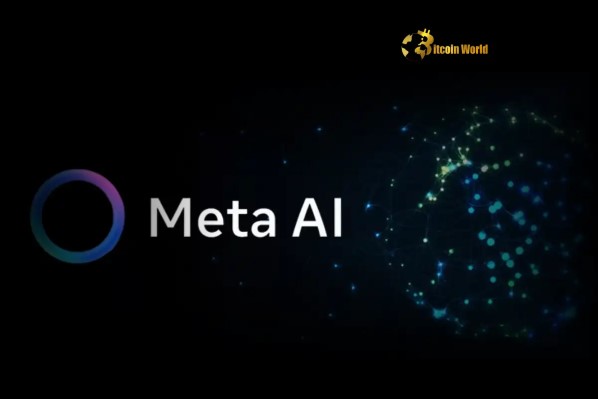Meta AI Accelerates Development with Strategic Split
0
0
BitcoinWorld

Meta AI Accelerates Development with Strategic Split
In the fast-paced world of technology, where innovation drives progress and competition is fierce, developments in artificial intelligence are constantly making headlines. For those tracking the broader tech landscape that influences digital economies and platforms, understanding moves by major players like Meta is crucial. A recent report indicates that Meta is undertaking a significant internal restructuring, specifically within its AI department, signaling a focused effort to accelerate AI development.
Understanding the Meta AI Restructuring
According to reports, Meta AI is undergoing a division into two distinct units. This move is designed to streamline efforts and increase the pace at which the company can bring new AI capabilities to market and advance foundational research. Here’s a breakdown of the new structure:
- AI Products Team: This unit will concentrate on integrating AI features directly into Meta’s vast portfolio of consumer-facing applications. Think of the AI enhancements you might see in Facebook, Instagram, and WhatsApp. This team is also tasked with developing and refining Meta’s new standalone AI application, focusing on user interaction and practical utility.
- AGI Foundations Unit: This team will look at the bigger picture, focusing on fundamental research and development necessary for building Artificial General Intelligence (AGI). Their work is crucial for improving core AI models, such as the widely discussed Llama model family. This involves pushing the boundaries of what AI can do, working on scalability, efficiency, and advanced capabilities that underpin future AI applications.
Importantly, reports suggest this split is a strategic realignment of personnel and priorities, with no indication of job cuts associated with the change. It’s about optimizing talent distribution to achieve specific goals more effectively.
Why the Split? Competing with Tech Giants
This internal reorganization comes at a time when the race for AI dominance among tech giants is intensifying. Companies like OpenAI, Google, and Anthropic are making rapid advancements, setting high benchmarks for innovation. Meta’s decision to split its AI team is a clear indication of its intent to stay competitive and potentially leapfrog rivals in key areas.
By creating dedicated teams, Meta can foster more focused innovation cycles. The AI Products team can rapidly iterate on features for existing platforms, responding quickly to user needs and market trends. Meanwhile, the AGI Foundations unit can dedicate resources to long-term research, free from the immediate pressures of product cycles. This dual approach aims to balance the need for immediate application with the pursuit of groundbreaking advancements necessary for developing robust AGI foundations.
Meta’s Broader AI Strategy and the Llama Model
The focus on the Llama model by the AGI Foundations unit highlights Meta’s commitment to developing powerful, open-source-friendly large language models. Initiatives like the ‘Llama for Startups’ program, which encourages early-stage companies to build generative AI applications using their models, demonstrate a strategic effort to build an ecosystem around Meta’s AI technology. Furthermore, events like LlamaCon are used to showcase the capabilities of their models and position them as viable alternatives to offerings from competitors like OpenAI.
This strategy of splitting teams while simultaneously promoting their foundational models externally underscores a multi-pronged approach to winning the AI race. It’s not just about building better internal tools; it’s also about making their core technology accessible and appealing to the broader developer community, potentially accelerating adoption and innovation built upon Meta’s infrastructure.
What Does This Mean for the Future of AI?
Meta’s strategic split is a significant development in the ongoing evolution of AI. It suggests that as AI systems become more complex and integrated into daily life, specialized teams are necessary to manage both rapid product deployment and fundamental research. This could become a model for other large tech companies navigating the challenges of scaling AI efforts.
For users, this could translate into faster delivery of new, intelligent features across Meta’s platforms. For developers and researchers, continued investment in AGI foundations and models like Llama means more powerful tools and resources could become available, potentially lowering the barrier to entry for developing sophisticated AI applications. The increased focus on practical AI products also indicates a strong push towards monetizing and finding real-world applications for advanced AI capabilities.
Summary: A Focused Push in the AI Race
Meta’s reported decision to split its AI team into dedicated product and foundational research units is a calculated move aimed at accelerating its pace in the intense global AI competition. By creating focused teams for consumer applications and core AGI research, Meta hopes to improve efficiency, speed up development cycles, and strengthen its position against other tech giants. This restructuring, coupled with initiatives promoting its Llama model, signals a determined effort to not only keep pace but potentially lead in the next wave of AI development and the pursuit of AGI foundations. The coming months will reveal how effectively this strategic realignment impacts Meta’s AI trajectory and its ability to deliver innovative AI experiences.
To learn more about the latest AI development trends, explore our article on key developments shaping AI features.
This post Meta AI Accelerates Development with Strategic Split first appeared on BitcoinWorld and is written by Editorial Team
0
0
 Manage all your crypto, NFT and DeFi from one place
Manage all your crypto, NFT and DeFi from one placeSecurely connect the portfolio you’re using to start.




